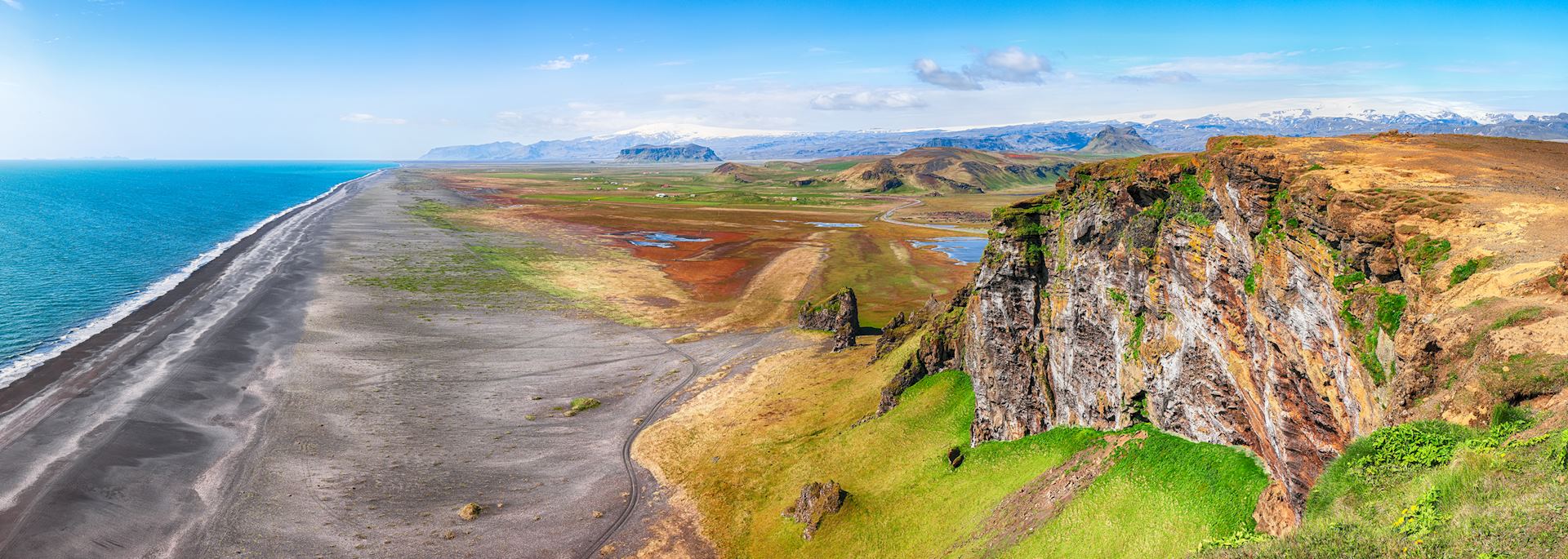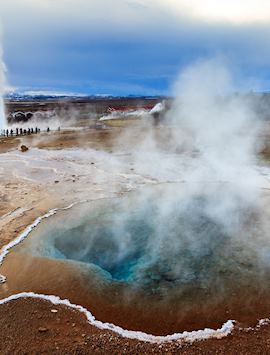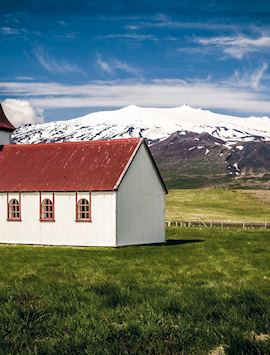By Iceland specialist Cara
Adventures inside glaciers and volcanic caves. Swimming and soaking in geothermally heated pools. Modern museums that let you get hands on with history and science. And, on the darkest nights, the chance to see the northern lights together under a starry sky. I’d say a family trip to Iceland will appeal if you have active children who love the outdoors and like to have experiences that take you beyond the everyday.
There are so many ways to fill your time, no matter when in the year you visit Iceland. And, because it’s a relatively compact country, you’ll get to see many of the country’s highlights even if you only have a few days, whether you’re driving yourselves or exploring with a private driver.
I can also help pick hotels with family-friendly rooms, and the guides we use will introduce you to the landscapes, geology, history, and culture of Iceland in ways that will captivate both the young and not-so-young.
Museums & lava shows in Reykjavík
As capital cities go, Reykjavík feels safe, friendly, and easy to get around thanks to its compact size. What I think most appeals to families here is the wide range of interactive museums. There’s the Saga Museum, which helps bring the country’s Viking heritage to life, drawing on the eventful tales written centuries ago by early settlers. Waxwork figures recreate scenes from the sagas, or you can do so yourself by dressing up as a Viking.
For something more modern, I suggest Perlan, a museum housed in a glass-domed building with an observation deck for taking in views of the city. Inside, the Wonders of Iceland exhibit encourages you to use your senses to touch, smell, and listen as you walk through an ice labyrinth. Meanwhile, the Forces of Nature exhibit lets you feel the rumble of an earthquake and tells you how volcanic activity continues to shape the country’s landscape and culture.
To explore this even further, you could visit the LAVA Centre or I could arrange tickets to Lava Show, a live educational performance where you watch molten lava in a safe environment, feeling its heat from your seat.
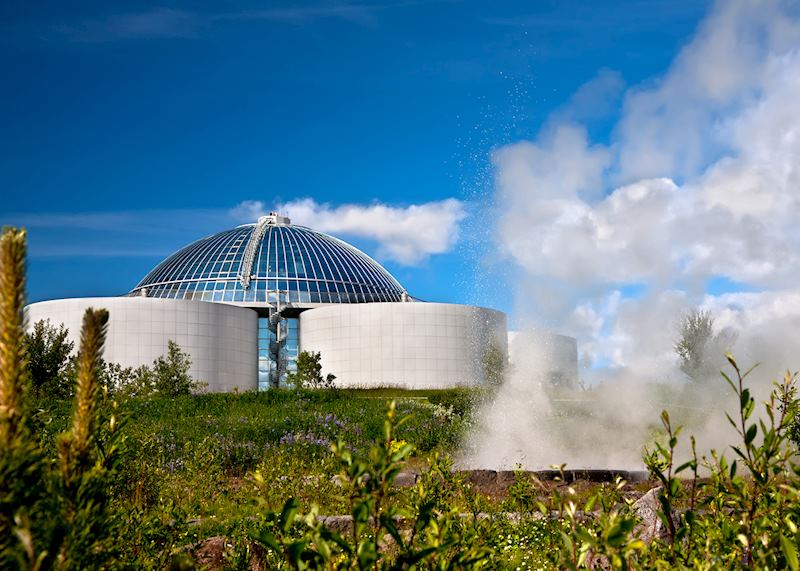
Geysers, waterfalls & bread-making in the Golden Circle
Easy to explore in a day from Reykjavík, the Golden Circle is a region with a high concentration of geothermal features and powerful waterfalls. There’s no denying that you’ll encounter plenty of visitors at most of the stops on this scenic route, but I’ll make sure you’re exploring either with a private guide or in a small group to get the most from your experience.
Over the course of a few hours, you’ll see geysers spurt water high into the air, watch bubbling mud puddles and steaming pools, walk between the diverging North American and Eurasian tectonic plates in Þingvellir National Park, and stand dwarfed beside ginormous waterfalls like Gulfoss, whose sheer scale and power left me agape.
Well-maintained paths get you close to these natural wonders, and your guide will help explain their geology in ways that interest all ages. The tour also stops at a geothermal bakery, where you’ll see how traditional Icelandic bread is baked naturally in the ground. Your guide will dig out a pot of bread that’s been cooking in the hot black sand for 24 hours, and you’ll get to taste the finished result.
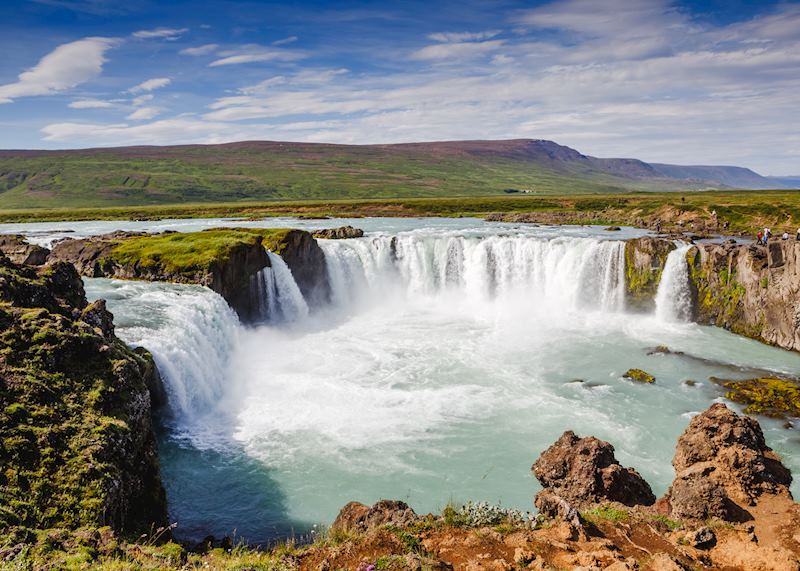
Horse riding on Vík’s black-sand beach
Stocky, shaggy-furred, and full of character, Icelandic horses have adapted to the country’s cool temperatures and rugged terrain over the centuries. They even have two additional gaits to other horses, the tölt, which helps them move smoothly over uneven ground, and the skeið (flying pace).
Their small stature and easy-going nature makes them ideal for children to ride, and I believe there’s no better setting than the black-sand beaches along the south coast. Experienced guides will match each of you with a horse and show you the techniques you need to ride safely. Then you’ll head out in a small group to Víkurfjara.
This volcanic beach is surrounded by cliffs that plunge into the slate-grey sea, and jagged rock formations are battered by the waves just offshore. If you’re feeling confident, your guide can show you how to try the tölt, and experienced riders might also be able to break into a canter.
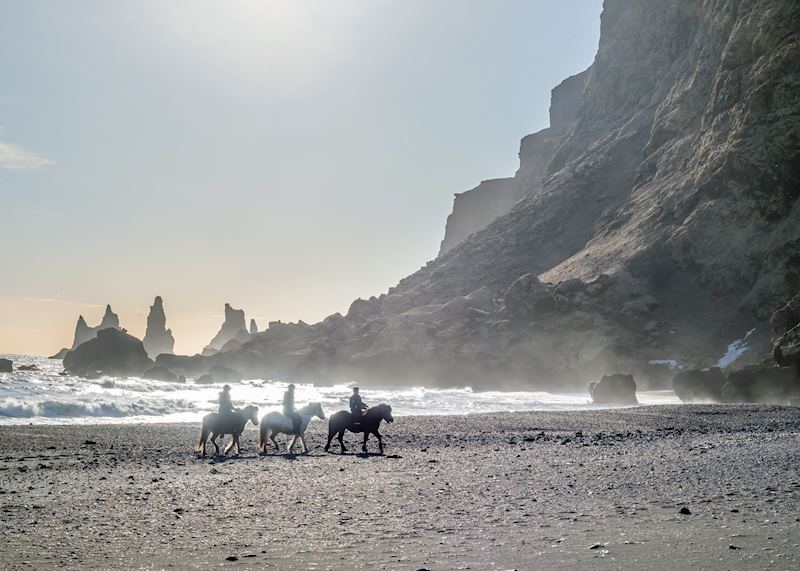
Whale watching & puffin spotting
The waters surrounding Iceland are frequented by whales year-round, though some species, like humpbacks, only migrate here during the summer. The best way to see them is on a whale-watching trip from Reykjavík, or, if you’re in the north, Husavík or Akureyri.
The boats we use have indoor seats and bathroom facilities on board, so it’s a comfortable experience for the whole family. Naturalist guides will fill you in on the area’s whales and other marine life, helping to point any out as you go. Keep your eyes peeled for minke whales, orcas, white-beaked dolphins, and porpoises.
If you’re there in summer, migratory humpbacks are joined by migratory puffins that come to nest in burrows along the coast. I spied a few flapping their wings vigorously to keep themselves above the waves, while others waddled comically on the rocks or stood patiently outside their burrows as if taking in the view.
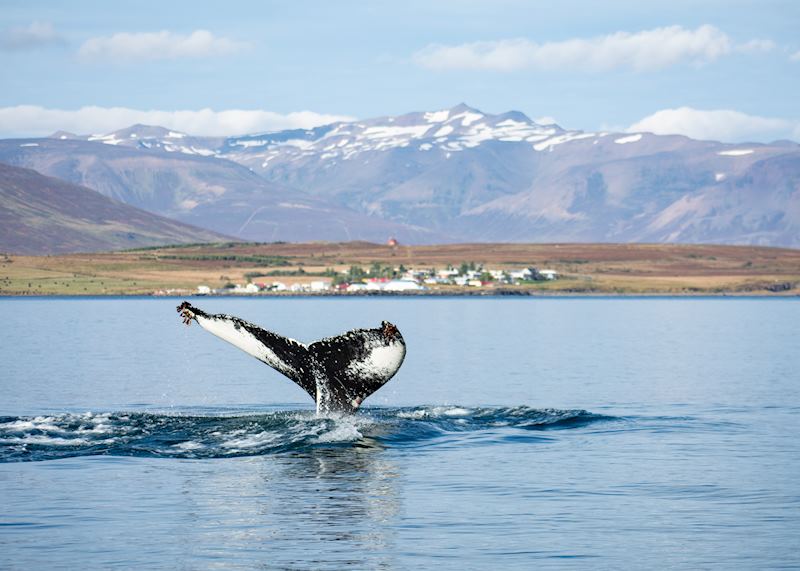
Inside the glaciers & lava caves near Húsafell
If your family love outdoor adventure, I recommend basing yourself in the Húsafell region in West Iceland for a few nights of your trip. Here, velvety-green countryside is interrupted by glacier-hugged mountains and dormant volcanoes. It’s where you’ll find Langjökull (‘long glacier’), the second-largest glacier in Iceland — and you can join a tour that takes you right inside this dazzling-white giant.
A sturdy ice-adapted vehicle takes you up onto the glacier. After donning crampons, you’re then led into a network of blue-tinged tunnels carved into the ice. The cool air is perfectly still, and if you listen carefully you might hear the ice creaking around you.
As you wind through the well-lit tunnels, your guide tells you more about Langjökull and its geology. At one point during my tour, we entered a cavernous room lined with pews like a chapel. We all sat down and my guide broke into song to demonstrate the excellent acoustics — as good as any symphony hall I’ve been to.
For another subterranean experience nearby, enter Víðgelmir lava cave. Technically a lava tube, it’s part of the Hallmundarhraun lava field, supposedly created when a volcano beneath Langjökull erupted in the 10th century.
You can hear all about its formation on a tour that takes you deep inside the cave along safe walkways. Strategic lighting illuminates the dark, twisted rock walls, revealing rust-orange and neon-green shades and otherworldly formations that lay hidden for centuries. Your guide will also share local tales that are rooted in the cave, explaining how Iceland’s geology has shaped the country’s folklore.
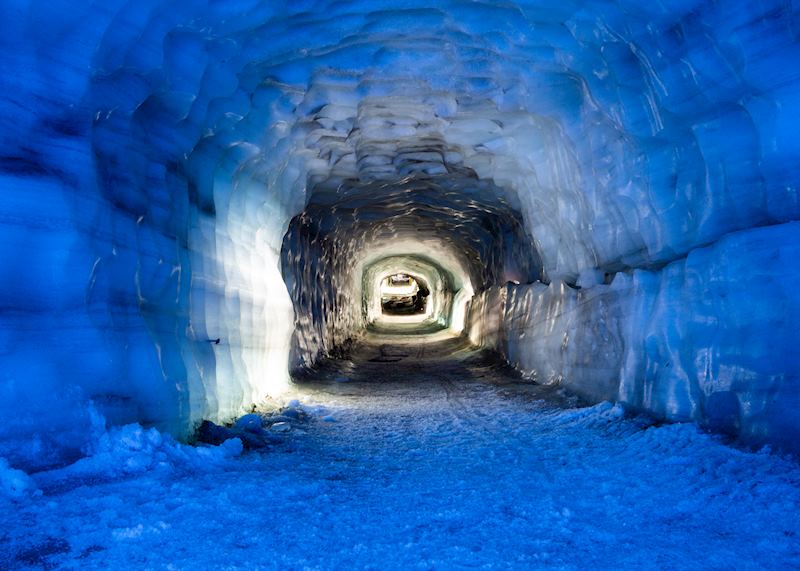
Meeting rare Icelandic goats in Borgarfjörður
Háafell Goat Farm is a stopping place I suggest if you’re exploring West Iceland, especially if you have younger children. The owners keep Icelandic goats, a breed that’s existed here for centuries, but came to the brink of extinction in the 19th century.
You can visit the farm between June and August to get up close and personal with the goats. They’re used to human interaction and happily skip and play in front of you — you can even pose with them for a family photo.
There’s a small shop selling goat-based products like soap, cheese, and cashmere. And, if you fall in love with the goats, you can adopt one (symbolically, that is), knowing the proceeds will go toward conserving the species.
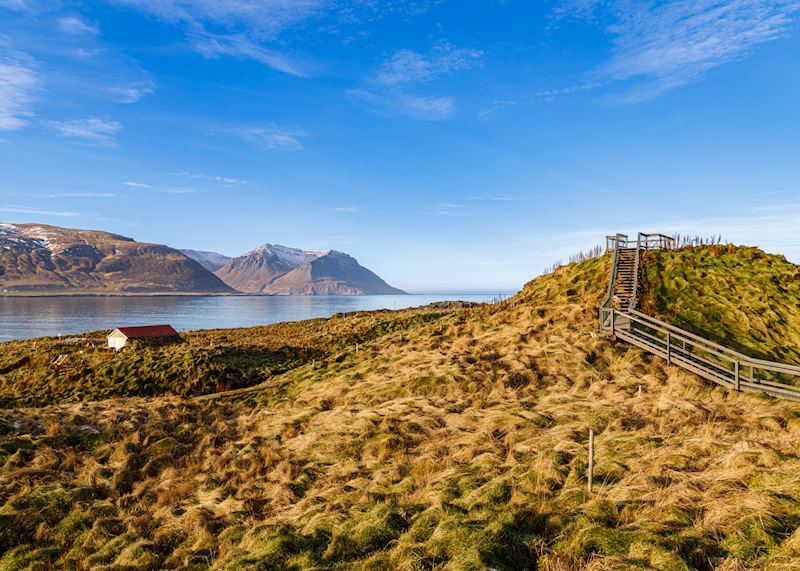
Seals & strength tests on the Snæfellsnes Peninsula
Also in the west, the Snæfellsnes Peninsula is like a microcosm of Iceland due to its patchwork of natural features. There’s Snæfellsjökull National Park, dominated by its namesake volcano and glacier (which you might know from Jules Verne’s Journey to the Centre of the Earth). Add to that stark lava fields, black-sand beaches, and streaky waterfalls. And, the distinctive Kirkufell peak, which rises like a wizard’s hat and made an appearance in Game of Thrones.
For families, I always suggest spending time on the beaches here. They’re usually quiet, as most visitors to Iceland flock to those on the south. If you head to Ytri Tunga beach, you have a good chance of spying the resident seal colony lazing across the rocks against a backdrop of the dark-blue water. I recommend bringing binoculars or a camera with a decent zoom so you can view them from a distance.
There’s also Djúpalónssandur, a black-pebble beach sitting in an arch-shaped bay. You can learn a little about the fishing history here and all have a go at picking up the four ‘lifting stones’, once used as a strength test for would-be sailors. I even struggled to lift the Amlóði (weakling) stone, which weighs 23 kg (50 lbs). The heaviest, Fullsterkur (full strong), is 154 kg (340 lbs) and only one sailor is said to have ever raised it off the ground.
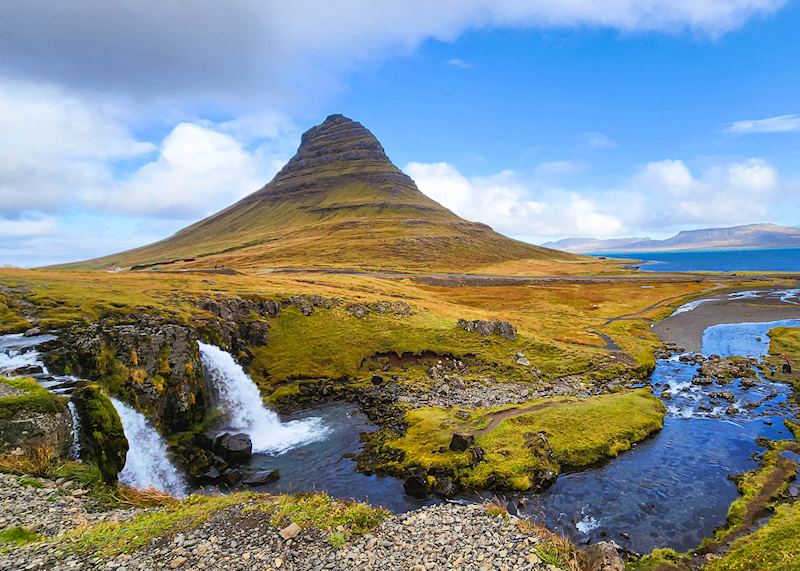
Geothermal swimming pools at Vök Baths
If your children love being in the water, I’d say Iceland is ideal — wherever you are, you’re unlikely to be far from a thermal pool. Everyone’s heard of the Blue Lagoon, but for a less crowded experience, I suggest heading to one of the country’s lesser-known baths.
Around an hour and a half’s drive from Reykjavík, Secret Lagoon is Iceland’s oldest swimming pool, opening in 1891. Its large expanse of water is surrounded by countryside and has a simple design, so it feels natural. And, children aged 14 and under enter for free.
If you’re venturing further afield to East Iceland, Vök Baths is a popular spot with locals. I love its location — the series of geothermal infinity pools appears to ‘float’ above the water of Urriðavatn lake. In fact, you can plunge into the lake for a refreshing contrast to the bathwater-warm pools.
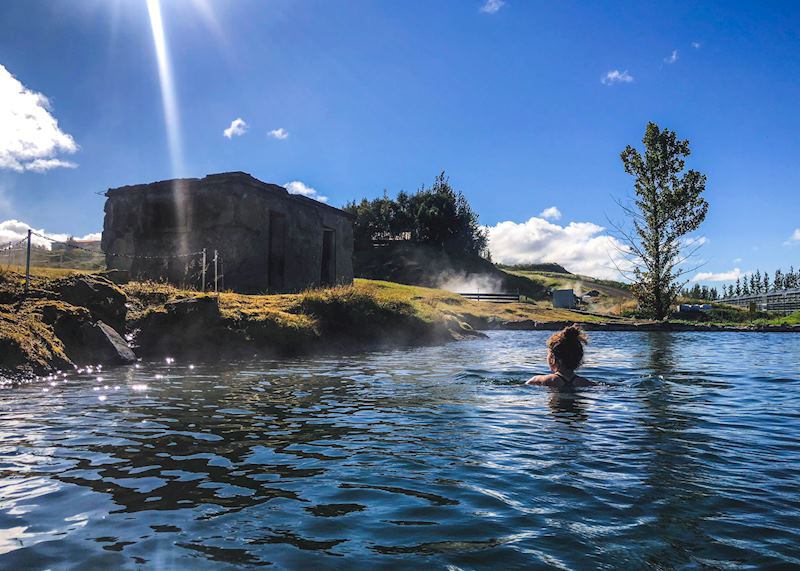
Northern lights tours from Reykjavík
A winter trip to Iceland usually has one key goal: to witness the northern lights. The phenomenon is never guaranteed, but Iceland’s proximity to the Arctic Circle gives you a good chance if you’re visiting for a few days. You can boost your chances by joining a northern lights tour from Reykjavík. Some hotels, like Hotel Rangá, also offer a wake-up call for if the lights show during the night.
We’ve put together a separate guide to seeing the northern lights in Iceland to give you more ideas and advice if you’re planning a winter Iceland trip.

Best family-friendly stays in Iceland
Many hotels in Iceland include family-sized rooms or the option to add an extra bed for a child. This is particularly the case in Reykjavík, where I like Centerhotel Miðgarður, if you’re a family of three. Black Pearl Apartments gives you extra space and amenities — the largest suites can accommodate up to six guests and have their own kitchen for the flexibility of eating in.
If you’re exploring more rurally on your trip, stays can be more limited. Hotel Rangá is my go-to for the south coast. It has snug and stylish log cabins, some with an extra ‘wall bed’, an observatory for stargazing and viewing the northern lights, geothermal hot tubs, and a games room.
Toward the west, Hotel Húsafell is close to Langjökull and Víðgelmir lava cave and has rooms with sofa beds for up to two children. It’s also a good option thanks to its small play area and outdoor pool complete with waterslide.
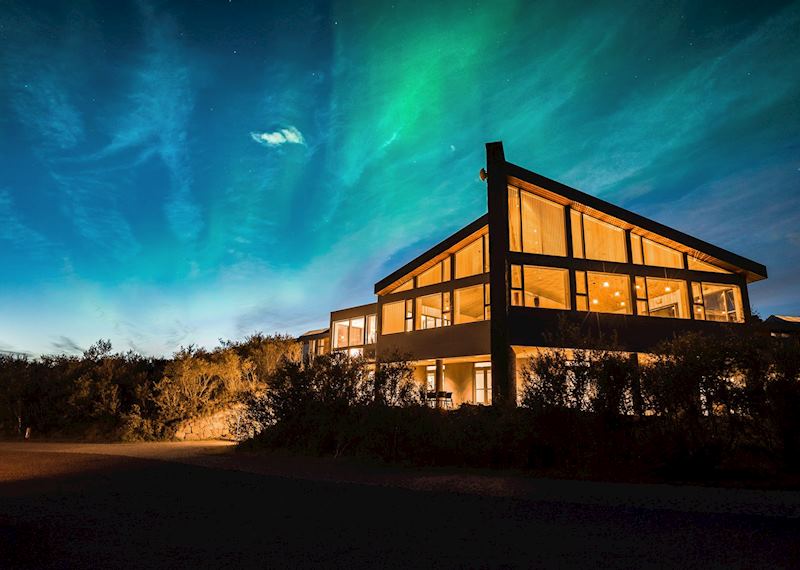
Getting around with children in Iceland
How you get around in Iceland depends on the time of year. Between May and late September, you can drive yourself around the country in a rental car that’s a suitable size for your family, complete with child seats (though you may prefer to bring your own).
Iceland’s roads are well maintained and clearly signed, and you won’t need to drive long distances to see many of the country’s highlights. Between October and April, we’ll arrange for you to have a private driver who’s used to navigating the wintry conditions.
Alternatively, you could base yourself in Reykjavík for the entire trip and simply head out on guided outings from there. Or, we can arrange for you to get across larger distances via short domestic flights.
The route I recommend for families visiting Iceland focuses on just three areas: the Húsafell region, including Langjökull, the south coast, and Reykjavík.
Best school vacations to travel to Iceland
Iceland can fit nicely into most school vacations — it all depends on what you want to experience. If you visit during the festive holidays or spring break, you have a chance of seeing the northern lights and can make the most of Reykjavík and the highlights closer to the capital. Meanwhile, summer lends itself to outdoor exploration, wildlife encounters, and scenic drives for exploring further afield.
Start planning your trip to Iceland
Start thinking about your experience. These itineraries are simply suggestions for how you could enjoy some of the same experiences as our specialists. They're just for inspiration, because your trip will be created around your particular tastes.
View All Tours in Iceland